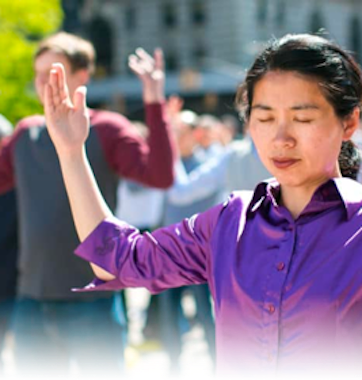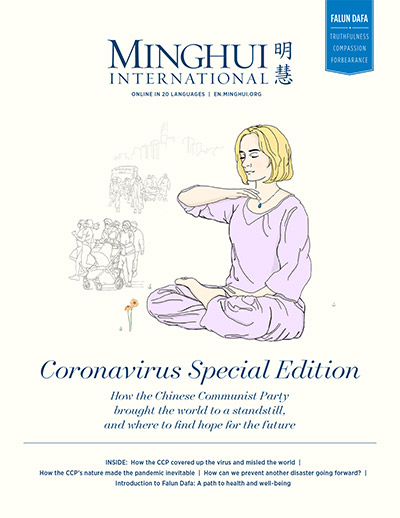(Minghui.org) The COVID infections and deaths remain high in China. “As early as mid-December, many rural areas were already seeing a deluge of cases. In a village of central Henan Province, one health worker saw more fever patients during the period of December 17-24, than in the entire previous year,” wrote Yanzhong Huang, a senior fellow for global health at the Council on Foreign Relations (an American think tank), in a January 18 article titled “In China’s countryside, a COVID-19 tsunami is brewing.”
Huang pointed out that, “as much as 83.4% of the rural elderly had underlying conditions, according to a 2015 study, making them highly vulnerable to COVID-19.” The zero-COVID policy also resulted in a few village clinics being prepared for the latest outbreak. He also wrote that “Until early January 2023, few village clinics were equipped with oxygen tanks or even oximeters to detect patient oxygen levels. State media reported that some doctors in county hospitals in northeastern China did not know how to operate ventilators.”
Moreover, rural clinics were prohibited from admitting fever patients and some of the village health workers ended up closing their clinics and looking for other types of jobs. “Between 2019 and 2021, the number of village clinics dropped from 616,000 to 599,000. And the number of village health workers fell from 1.45 million to 1.36 million,” wrote Huang.
Funerals Last a Few Minutes
RFA (Radio Free Asia) interviewed Shanghai resident Zhao on January 17. He said that his grandfather had recently died in their hometown of Hangzhou City, Zhejiang Province and that their family is still working on getting a cremation booking. Because of the high death toll, people everywhere needed connections in order to secure a cremation spot.
RFA reported that Zhao said that funeral home staff in Hangzhou had told him that their cold storage was completely full and that there were no memorial services currently being held, so as to save time. The farewell ceremony for the dead person is held right there in the courtyard and only lasts a few minutes.
Zhao was also cited as saying, “It's not just Hangzhou either. My friend in Shanghai said the relatives of someone who died of COVID-19 recently were having to pay for cold storage every day that they were in the queue.”
The same thing happened in Mudanjiang City Crematory of Heilongjiang Province – no memorial services were held and the furnaces were operating 24 hours a day. This crematory used to burn about 10 bodies a day and now around 100. Smaller cities under the administration of Mudanjiang City such as Hailin and Ning’an also saw their local crematories overrun. The crematories are full of bodies, which are just covered by cloth. Many of the deceased were from the metro area of Mudanjiang City but could not find crematory slots there. Many in the countryside simply buried their dead family members instead of cremation. Some households lost three elderly members in one month.
The dead not only included the elderly, but also people under 50, including some in their 20s. There was one couple who were both infected and recovered but suddenly died together. It was said that one hospital in Mudanjiang reported more than 20 deaths in one night. Many more infected could not even get a bed in the hospital and died in their homes. Their death cause could not be recorded as COVID.
Almost everyone in Mudanjiang had been infected. They could not understand why the Chinese Communist Party (CCP) abruptly ended the zero-COVID policy on December 7, 2022. Many said the CCP did not care about people’s life anyway and some suspected this [high death toll] was one way to cut down the pension expense.
Cremation in High Demand
One hospital employee in Shijiangzhuang City, Hebei Province said he and his coworkers in his department hardly needed to work night shifts in the past. Because of COVID, however, he had to do so recently and issued over 10 death certificates in one night. He had never experienced something like that in the past. He wondered how many more people may have died during the daytime. They were told not to publicize the information.
There is a long wait time for cremation due to the high number of deaths. Families in Chengyang District of Qingdao City, Shandong Province, have to wait for 5 days before they could get a cremation spot. One needs to pay 38,000 yuan extra to cut in the line. In Jiaozhou City within Qingdao, the wait time is three to four days and one needs to pay 2,000 yuan more to move up on the waiting list. One reporter saw a long line at Dashan Crematory in Qingdao City. The deceased included both the elderly and young ones, from three or four-year-olds to some in their 30s or 40s.
A woman in Xihai’an New District of Qingdao had diabetes. After getting infected with COVID and being hospitalized last week, she died three days later. Her family said the hospital she went to was in Jiaonan, which was packed with patients. Her family used connections to have her body cremated at the Dashan Crematory.
Four Funerals Simultaneously in the Same Neighborhood
Multiple online videos posted by residents of Shaoyang City, in Hunan Province showed many funeral processions on the streets. Tang Ling, a resident in a township under the administration of Shaoyang, told The Epoch Times on January 18 that about 1,000 people had died recently in the township. Most of them were elderly. Some neighbors had even lost two or three people.
“In one family, two brothers in their 50s died. In another family, both husband and wife died, so did their son,” said Tang. Most villagers buried the dead instead of cremation. Since it was in the countryside, many families did hold grand memorial services. “During peak times, I have seen four families having funerals at the same time in the neighborhood,” he said.
Cai Hongliu is the Director of Critical Care Medicine from First Affiliated Hospital of Zhejiang University School of Medicine. When interviewed by China Newsweek recently, he said Zhejiang had entered the peak phase of severe illnesses starting from mid-December. It is still in the plateau stage of the peak phase and severe cases have not gone down yet. The workload of intensive care has been increasing in the past three weeks. Among the severely ill patients, many were elderly and/or had underlying diseases. The average hospital stay has been increasing and many hospitals are renovating intensive care units (ICU) to add more beds.
Cai said the pressure was huge when the number of patients increased sharply and many medical workers also got infected. The critical care equipment is in shortage and it is difficult to increase the ICU staffing in a short time. The expansion of an ICU usually takes several months.
Research from the University of Hong Kong published in Nature Medicine on January 9 found that the infection in Beijing had peaked on December 11. The paper was titled “Estimating the transmission dynamics of SARS-CoV-2 Omicron BF.7 in Beijing after the adjustment of zero-COVID policy in November - December 2022.”
The authors estimated the cumulative infection attack rate (i.e. the proportion of the population who have been infected since November 1 in Beijing) was 75.7% on December 22, 2022, and 92.3% on January 31, 2023. They also found that back in November, the Rt (Effective Reproduction Number, or the average number of secondary infections per infectious case) was 3.44.
All content published on this website are copyrighted by Minghui.org. Minghui will produce compilations of its online content regularly and on special occasions.
Category: News & Events









